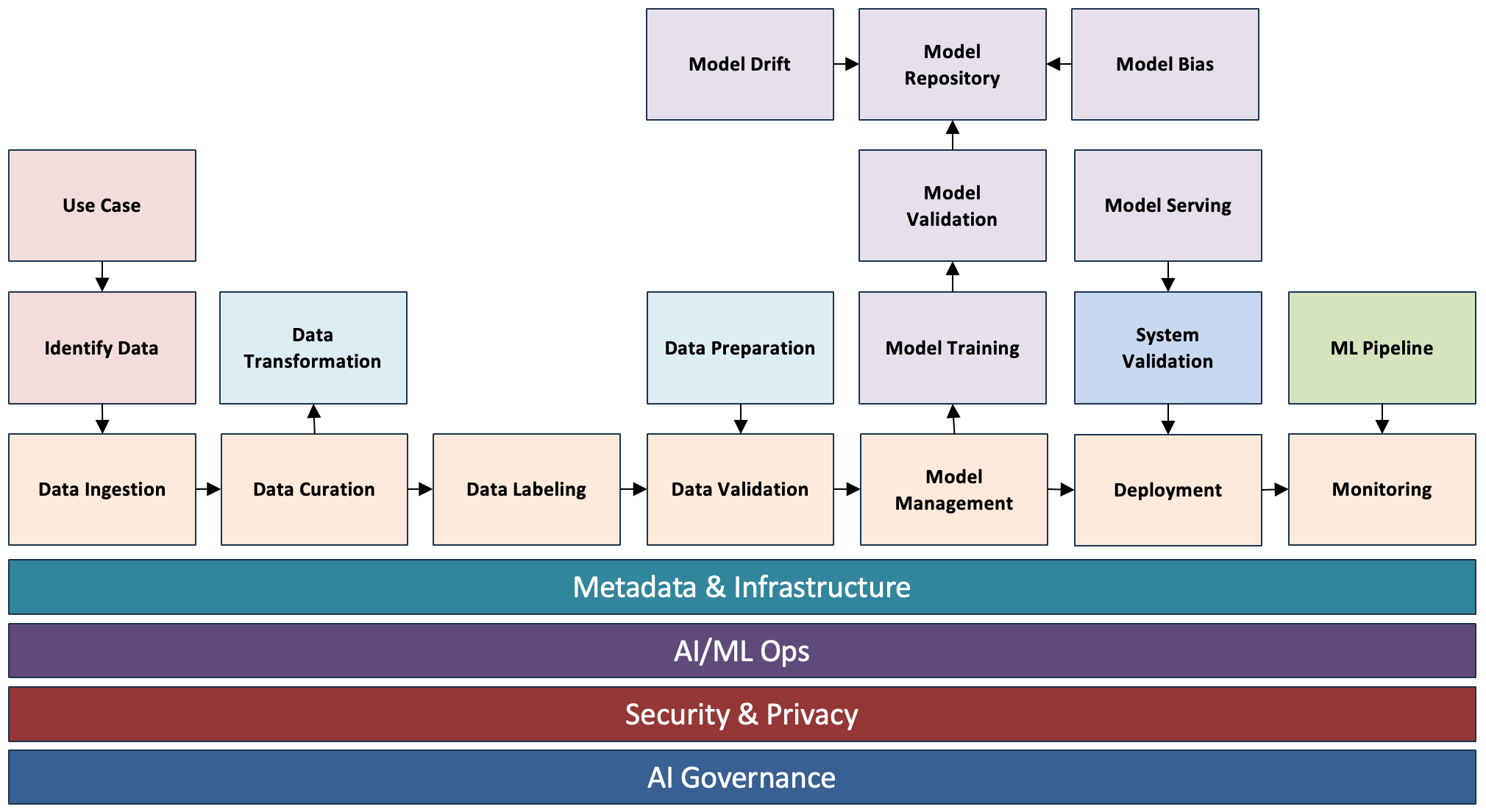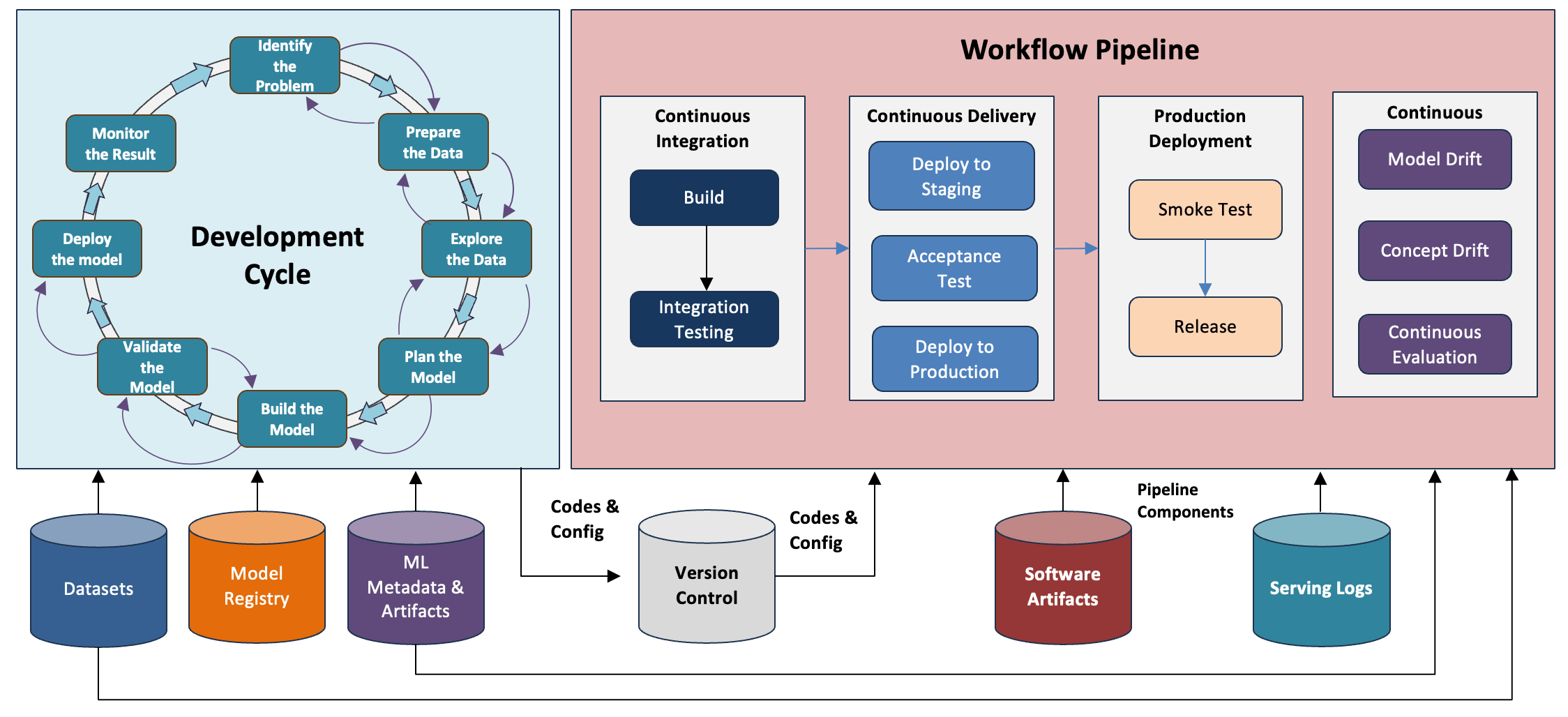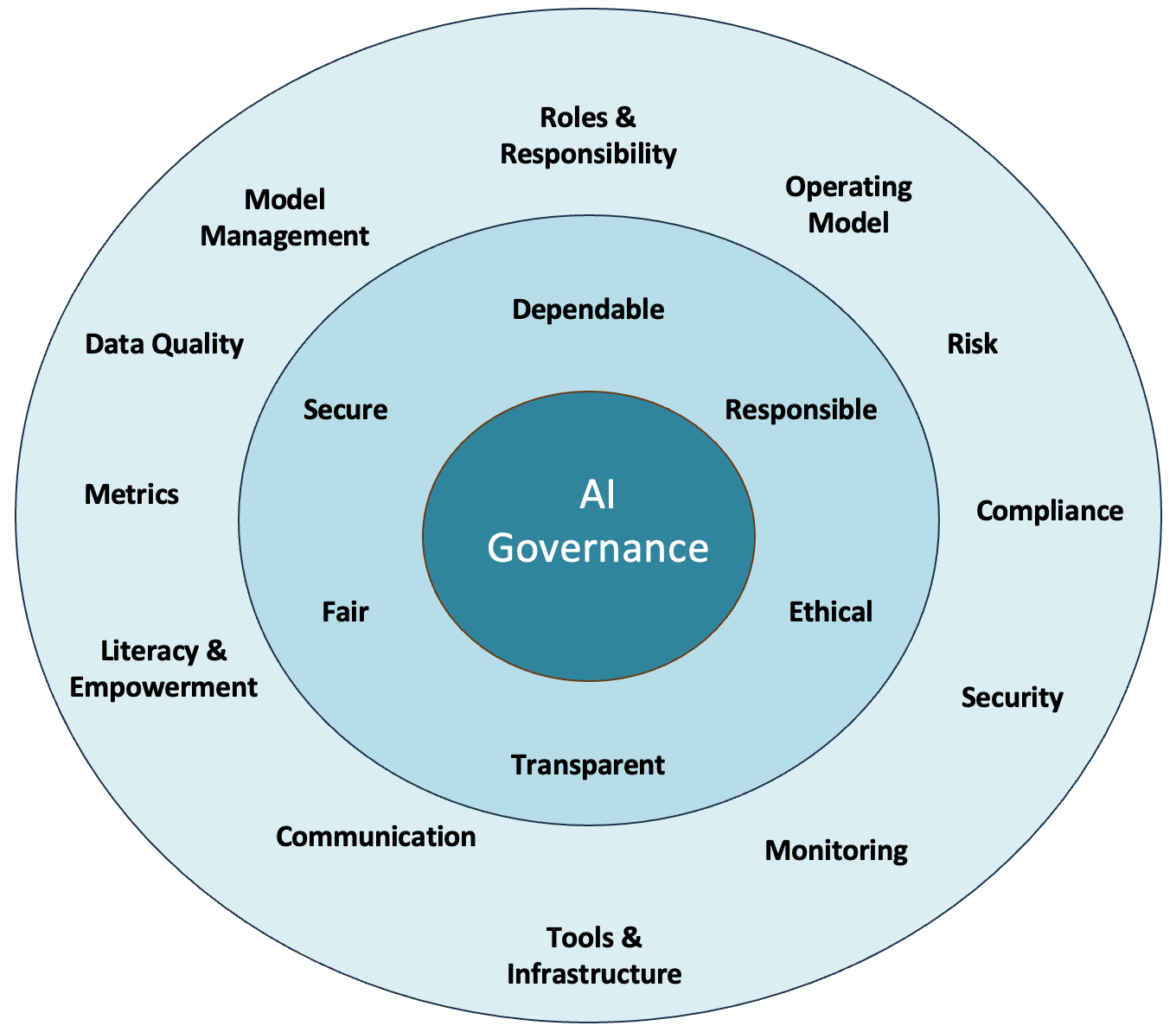AI Implementation
Mavengigs
Mavengigs is a global consulting firm providing consulting services for Mergers & Integrations (M&A) and Transformations. Through our network of independent resources and partners, we serve clients in USA and Europe. Mavengigs is a division of Panvisage Inc. (a holding company with interests in consulting, education, real estate and investments).
AI Implementation
The combination of artificial intelligence (AI) and business intelligence (BI) is poised to transform the way businesses operate, especially when it comes to data-driven decision making. AI-powered analytics and decision support systems will enable organizations to leverage insights and decisions made based on data-driven recommendations. How will AI help BI draw deeper insights and make better decisions? The prevailing governance methods often lack sensitivity to the specific business context, rendering them ill-suited for agile responses to emerging opportunities.
Organizations are shifting their focus towards fostering a culture that emphasizes innovation, collaboration, and effective communication, while also embracing ongoing performance enhancement to gain a competitive advantage and enhance the experiences of both customers and employees. In the present day, datasets are often examined manually to establish connections. However, with the exponential growth in data volume originating from diverse sources, there is a growing need for the adoption of a versatile unified data model that has the capability to uncover new relationships within the data. This transition will not only stimulate innovation but also empower organizations to process data in real-time.
AI Systems
Artificial Intelligence systems essentially involves 2 main components: Code and Data. There are notably 2 types of AI namely, (a) Model Centric AI and (b) Data Centric AI
Model centric AI focuses on improving code to achieve better results given a fixed set of data. We spend relatively more time on optimizing an AI model. Whereas a Data Centric AI aims to improve data quality to achieve better outcomes by treating code as an unchangeable entity. While model centric AI deals with developing or improving the AI model or algorithm, data centric AI deals with the labelling, augmenting, managing, and curating of data. Model-centric AI tends to optimize bigger AI models on large-scale datasets which requires large-scale datasets and lots of computing and memory resources, whereas data-centric AI may require domain knowledge or experts to find inconsistencies in data.
AI Reference Architecture
AI Lifecycle Process

The key architectural and system development components include:
- Notebooks for experimentation and visualization.
- Metadata and artifacts of the experiments.
- Data schemas.
- Query scripts for the training data.
- Source code and configurations for data validation and transformation.
- Source code and configurations for creating, training, and evaluating models.
- Source code and configurations for the training-pipeline workflow.
- Source code for unit tests and integration tests.
- Training-pipeline executable components (for example, container images stored in a container registry).
- Training-pipeline runtime representation, which references the components stored in an artifacts repository.
- A trained and validated model stored in the model registry.
- Training metadata and artifacts stored in the ML metadata and artifacts repository, including pipeline execution parameters, data statistics, data validation results, transformed data files, evaluation metrics, model validation results, and training checkpoints and logs.
- Model serving executable application (for example, a container image stored in a container registry or a Java package stored in an artifact repository).
- Online experimentation evaluation metrics stored in ML metadata and artifact repository.
AI/ MLOps includes the following capabilities:
- Dataset & feature repository
- Data processing
- Experimentation
- Model training
- Model registry
- Model evaluation
- Model serving
- ML pipelines
- ML metadata & artifact repository
AI API
An AI API is used to incorporate or enhance AI capabilities. These APIs serve a broad spectrum of business functions, ranging from facial recognition and spam filtering to location detection and content sharing. Acting as intermediaries connecting two applications, APIs are pivotal in securing data transfer between systems. In this context, AI can play a crucial role in scrutinizing security threats and identifying cyber-attacks. AI APIs seamlessly blend various artificial intelligence and machine learning techniques to extract pertinent data and interact with server software or other applications.
AI systems can interact independently with other AI systems through these APIs, resulting in much larger and smarter systems.
New UIs (user interfaces that use speech and vision) will replace the traditional UIs (keyboards and monitors), resulting in seamless interaction between humans and network of interconnected AI systems.
AI Strategy Key Touch Points
Identify use cases
- Comprehend the problem domains that AI can tackle.
- Seek ideas and advice from AI practitioners.
- Generate a catalogue of AI projects/Use cases with the potential to deliver business advantages.
Prioritise initiatives
- Formulate a concise description of the business problem and the corresponding opportunity.
- Define measures of success.
- Assess the appropriateness of the existing data.
Timelines
- Recognize the importance of iteration of an AI system.
- Set achievable objectives related to accuracy and timelines
Budgeting
- Comprehend the budget prerequisites associated with various AI development approaches.
- Choose an initial and a sustainable development strategy for crafting AI systems.
Sponsorship and Buy-In
- Define the return on investment of your AI strategy
- Develop a clear, detailed implementation plan.
- Educate senior management regarding AI and establish realistic expectations.
Mitigate cultural and security concerns.
- Educate and involve the workforce to address concerns.
- Prepare for unconventional security threats.
Develop a long-term strategy
- Set aside budget for maintenance, updates, and training.
- Review new technologies and evolving data sets.
- Create strategies for expanding your AI implementation to additional business units and for embarking on new AI projects.
- Establish a procedure to guarantee adherence to changing legal requirements
Data Key Touch Points
Data Strategy
- Develop a data strategy
- Review your data strategy regularly (quarterly review recommended)
Optimize data acquisition & data processing.
- Ensure data collection is legal. Data are collected from many sources like partners, university, google search, GitHub etc
- Preserve detailed fields through data catalogue
- Ensure data is a good representation towards the use case
- Adopt data marketplace approach with modern data architecture
Develop a high-quality data set.
- Verify that you possess an adequate number of data samples to ensure fair predictions
- Understand variance in data required to solve the business challenge
- Identify sources of bias in the data
- Follow best practices for labelling data
Understand data context.
- Capture the data lineage. Document the sources of your data
- Add metadata to capture data collection methods
Data Storage
- Forecast expected growth in data
- Establish the process and methods to storage and access data
- Develop and test performance and scalability of the system alongside with deployment process
Data Provisioning
- Define the governance process to add new data (internal or external). Very often acquiring these data consumes lot of time due to approval processes.
- Develop a plan to archive data sets.
Security
- Ensure staff members have the minimum access level to fulfil their job responsibilities.
- Use multi-factor authentication.
- Perform penetration tests regularly to validate security.
- Appoint stewards responsible for compliance with rules and regulations.
Data marketplaces facilitate the trading, sharing, and enrichment of data, thereby enabling organizations to develop distinct and proprietary data products, from which they can derive valuable insights and discovery. Using Data Marketplace, barriers will get reduced towards data collaboration of various sources making a pathway for a greater value generation.
Data as a Product (Data Product) is a data-serving front interface where data user can find & consume the data best fitted for their needs, making it the primary business facing data resource. Data Marketplace enables data consumers actively participates in cataloguing, curating, and categorizing data sets.
Adopting a modern data architecture that incorporates a domain-focused common data model along with Data Product and Data Marketplace, as well as robust governance practices and data management, is crucial to effective business Insights.
Establishing an effective governance program becomes paramount in handling intricate cross-organizational issues, especially, when platforms continue to merge in the realm of Analytics, Business Intelligence, data science, and Machine Learning. To promote use case-based insights and data narratives, metadata, governance, and data quality are poised to assume a pivotal role.


AI Development Key Touch Points
AI/ML development involves experimentation, which implies multiple iterations with processes; The task included but are not limited to:
- Learn the business domain, including relevant history, such as whether the organization or business unit has attempted similar projects in the past, from which you can learn. Formulate initial hypotheses (IH) to test and begin learning the data.
- Assess impact and security requirements of using data of third-party services.
- Prepare and maintain high-quality data for training ML models. Develop data sets for testing, training, and production purposes. Setup the environment for executing models and workflows, including fast hardware and parallel processing.
- Determine the availability of APIs that address your requirements.
- Selecting frameworks and libraries to accelerate development based upon your requirements for ease of use, development speed, size and speed of solution and level of abstraction and control.
- Determining the methods, techniques, and workflow you intend to follow for the model scoring. Explore the data to learn about the relationships between variables, and subsequently select key variables and the models you are likely to use.
- Track models in production to detect performance degradation.
- Perform ongoing experimentation of new data sources, ML algorithms, and hyperparameters, and then tracking these experiments.
- Maintain the veracity of models by continuously retraining them on fresh data.
- Avoid training-serving skews that are due to inconsistencies in data and in runtime dependencies between training environments and serving environments.
- Handle concerns about model fairness and adversarial attacks (making small, imperceptible changes to input data to deceive the machine learning model).
- Determine succeeded or failed, based on the criteria developed in the Discovery phase through observation.
- Identifying key findings, quantifying the business value, and developing a narrative to summarize the findings and conveying to stakeholders/sponsors.
- Deliver final reports, briefings, code, and technical documents.
AI Deployment Key Touch Points
CI/CD: Development and Release

After verifying that the model works technically, it is imperative to testing the model’s effectiveness in production by gradually serving it alongside the existing model and running online experiments. A subset of users is redirected to the new model in stages, testing new functionality in production with live data, as per the online experiment in place. The outcome of the experiments is the final criterion that decides whether the model can be fully released and can replace the previous version. A/B testing and multi-armed bandit (MAB) testing are common online experimentation techniques that can used to quantify the impact of the new model.
There are 2 Deployment patterns, namely (a) Deploy Model (b) Deploy Code. Deploy code is advantageous where access to production data is restricted, allowing the model to be trained on production data in production environment.
AI Governance
To prevent existential risks and to have human oversight of AI application AI Governance is crucial. Ensuring protection, fairness, ethics, responsibility, and transparency is absolute essential. A few key pointers to accomplish are:
- Lawfully collect the data that is required. Be transparent as to why data is being collected, what it will be used for and who will have access to it.
- Following legal and regulatory requirements related to data privacy, ethics, and fairness.
- Delete data when its “agreed purpose” has been fulfilled. Remove unnecessary personal data. Implement a process to remove all the data being stored about a specific individual whenever required.
- Anonymise data, where possible, to remove personal identifiers. Encrypt personal data. Limit access to data and ensure data usage is only for the purposes agreed upon. Incorporate security governance and permissions to store and process data.
- Secure data storage environments and monitor data access. Incorporate an audit trail of individuals who view or modify data.
- Implement a process to provide an individual or governing bodies with a copy of all the data being held about him or her.
- Implement a process to interpret the output of a system and act on the outcome is essential. One needs to be cognizant of its potential impact on society and individuals, to avoid biases and discrimination, ensuring fairness in outcomes and decisions.
- Allow users to understand how decisions are made to foster trust.

Please contact us today!
Mavengigs
16192 Coastal Highway, Lewes, DE 19958
Contact Us
Ph: (310) 694-4750, sales@mavengigs.com
